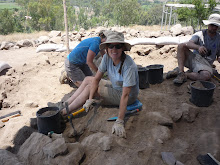I would like to address the question of the value of comparative work and whether Doniger convinces me of its value.
I would answer “yes” and “no”. On the one hand I think that comparative work does have value in the study of myths, however I do not agree that this is inherent or that it is the only way that myths ought to be studied. I would like to first examine Wendy Doniger’s definition of Myth and then discuss the history of comparison as a method and the problems associated with the method.
The Definition
As soon as I opened up this book I wondered how Doniger was going to define Myth. I have done some studies in the past on myth and in my experience it is always a difficult term to describe. It is first important to clarify the term “myth” which carries a certain connotation in popular culture (for example: “myth busters”) and secondly to differentiate myths from folklores, legends and similar literary genres.
Based on her introduction she has defined myth as:
- Not a lie or false statement
- A story that raises religious questions
- Sacred and shared
- Something that can be analyzed both narrowly and broadly
- Expresses cross-cultural experiences
- Being comparable between cultures
She acknowledges that the history of the term “myth” makes it a difficult word to define and study but nonetheless believes that the comparative approach is the best method to understand myths. While I agree with a cross-cultural examination, it is also important to look at a text within itself and within the particular context in which it was written (or spoken) and the context in which it was received. I think that by simply comparing a myth based on shared or different elements can be problematic. In theory I think it works, but in reality I think that it can be very subjective. I will explain further. When one does a comparative approach they look at similar and different elements between the two things being compared, however the criteria that is noticed can be biased and could give the impression that these myths were of a similar origin or could be different variations of the same story. Here again I believe we can run into the problem of classification and the dangers of categorizing, which we have discussed in previous classes.
A New Comparative Approach
In chapter 2 of Wendy Doniger’s book The Implied Spider she argues that “myth is an inherently comparative genre”. She advocates the idea that comparison is not only a useful method of studying myths but as one of the most basic ways we come to understand our world it is the most useful way to understand myths. I liked how Doniger used both a vertical analysis and a horizontal analysis of myth. Not only can myths be understood vertically (earthly & divine) but can also be understood in their relation with other myths (cross-cultural). It is useful to understand the dynamics of myths and that they can be understood in different ways and on different levels.
There are three different problems that Doniger mentions about the comparative approach, they lack rigor, they advance unfalsifiable universalist hypotheses and that they are politically unhealthy (64). These are the reasons why she writes that the universalist comparative studies have largely been abandoned in postmodern studies. I would like to respond to her first point as it struck me when I read it. In her response to the lack of rigor she presents a new model for comparison, one which insists upon a comparatist having the necessary background knowledge of the primary language and an awareness of the necessary context. I think that she is being too idealistic in her response to this model. While in theory this would be ideal, in practice who would be able to regulate this? While I agree that it is important to know the context of the particular myth or myths which are being studied, the context of many myths are highly debatable.
In Conclusion:
I personally agree with Doniger that the comparative approach is a useful method for the modern study of myths. However, I am hesitant to disregard the opposite approach. By focusing on a particular culture within a particular context one can understand the value of certain beliefs and ideas about the world, ideas which may not be as central to another culture who has their own myth. I think that the most important approach when looking at myths is to try to understand their reception rather than their origin. If a cross cultural comparative approach helps to understand this better then I would say that this would be the best method to undertake.
Yıldızların Hüzün Meyveleri
9 years ago
